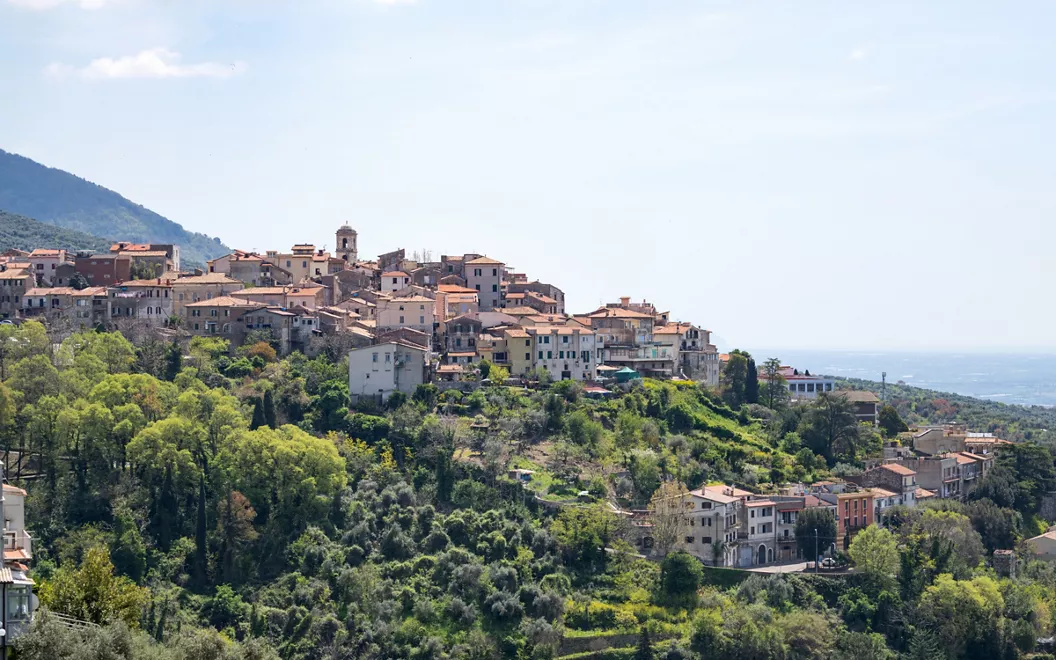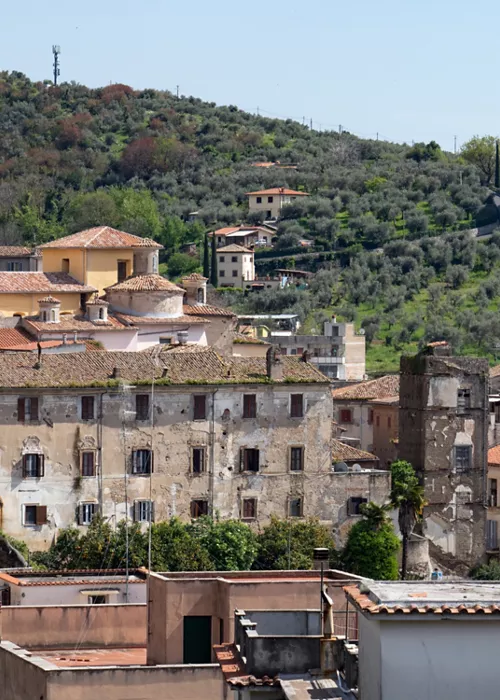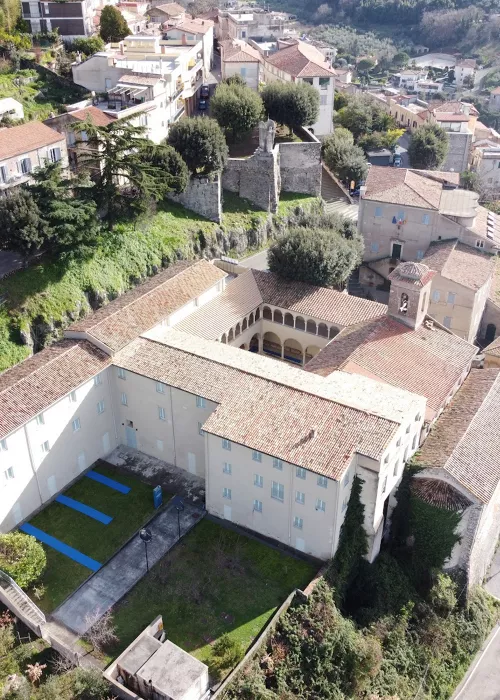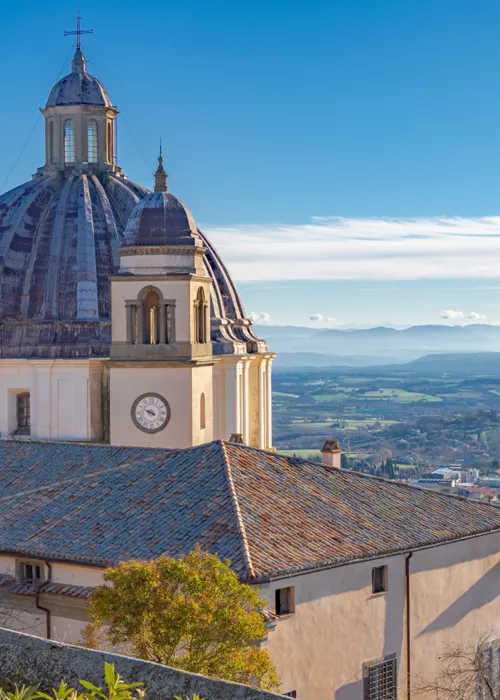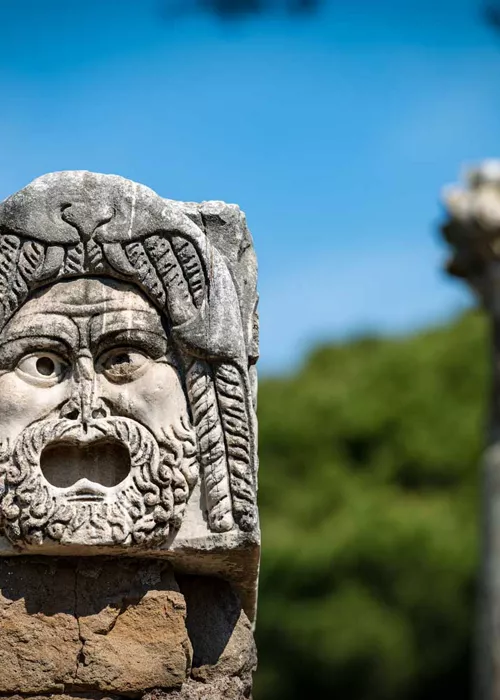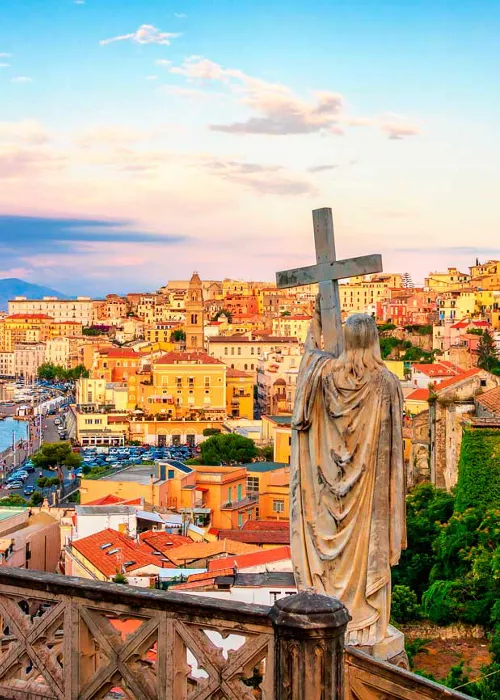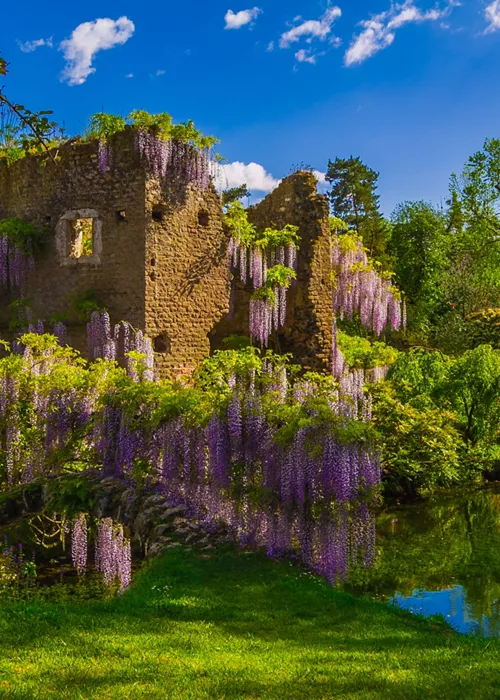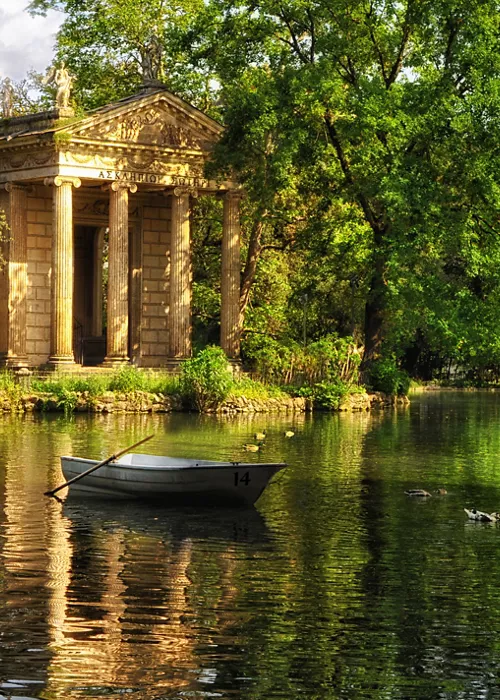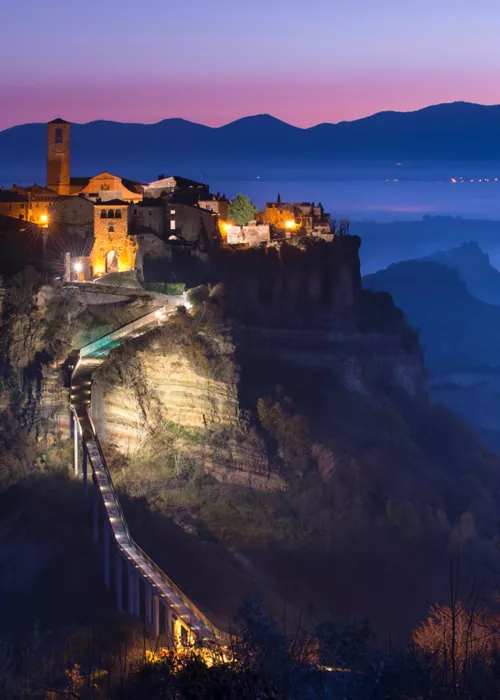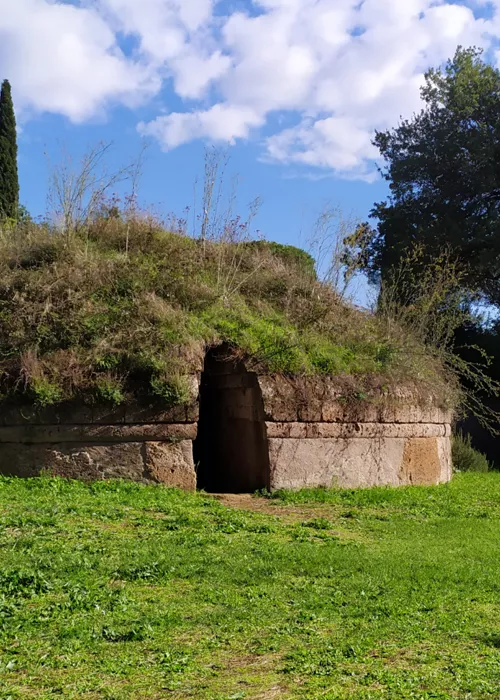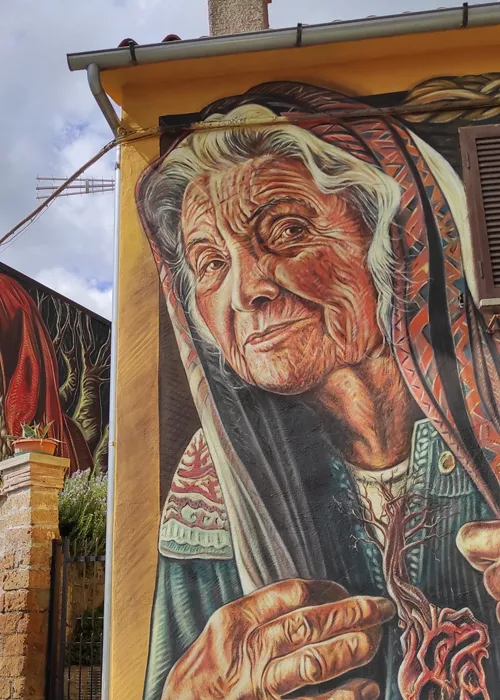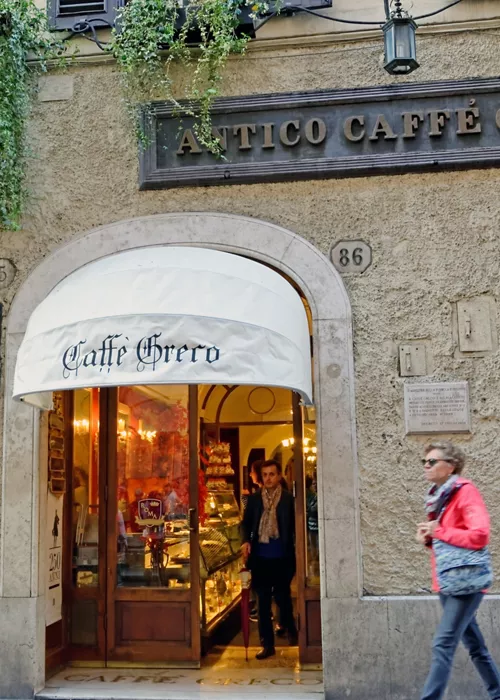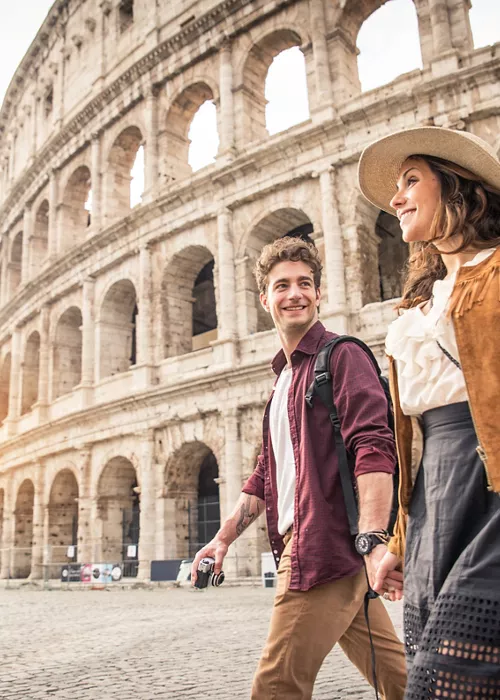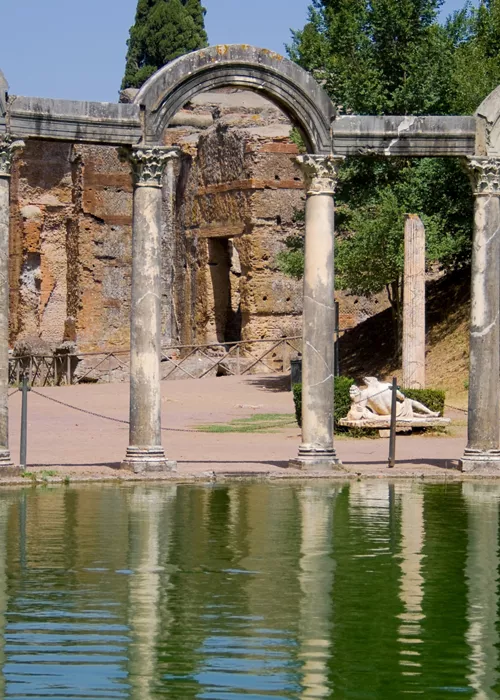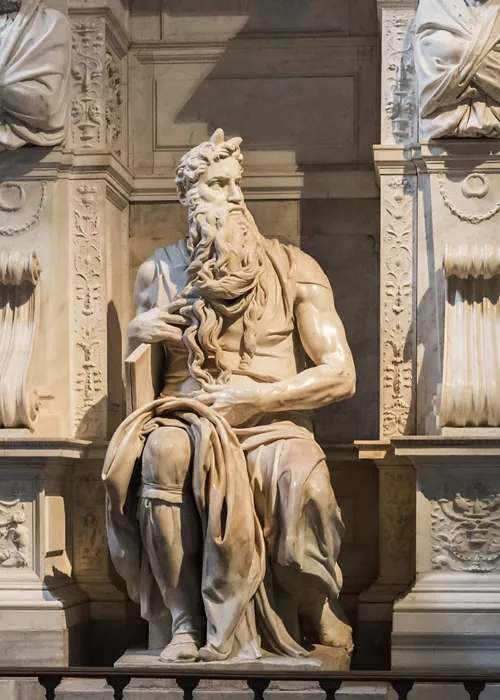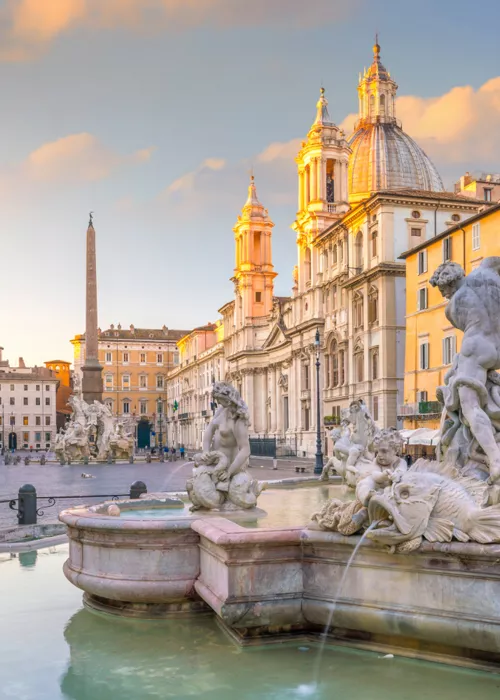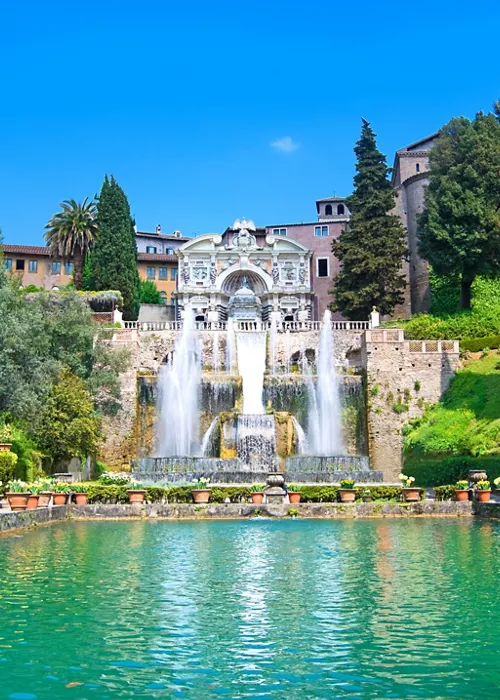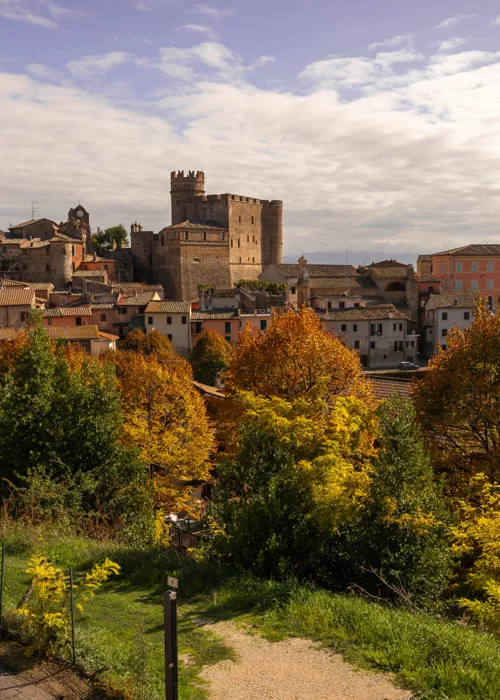Cori: the jewel of the Lepini mountains
5 minutes
History and Interesting facts
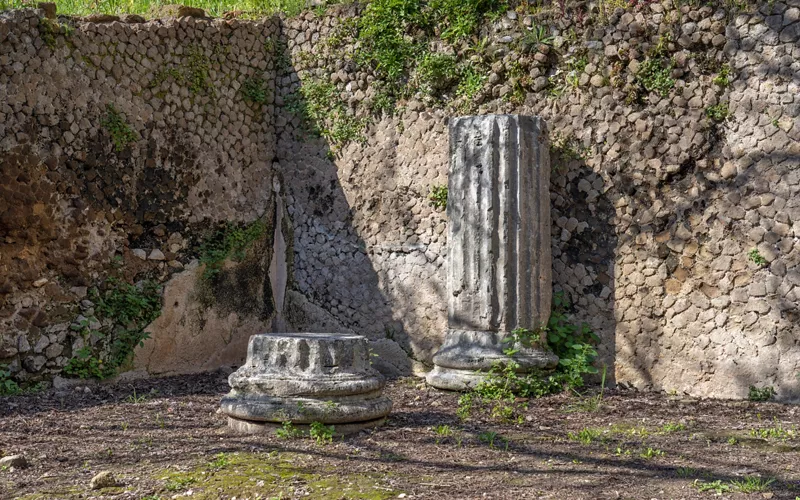
Legend tells that the town was founded by Dardanus, from the East, and Corax of Argos. What is certain is that this place, with settlements dating back to the Bronze Age, was once inhabited by the Volsci. It then became a Latin colony and Roman from the 5th century. Cori always remained particularly loyal to Rome, as testified by the statue of Minerva from the temple of the Dioscuri. A copy of the statue was donated by the City of Rome in 1999 and can be seen in the town's Museum. Apart from a brief period in the early 13th century when Cori was ruled by Pietro Annibaldi, the town has always been 'free'. It is dominated by the Temple of Hercules, crowned by stretches of polygonal walls extending for about two and a half kilometres. Also notable are the remains of the Temple of Castor and Pollux, and the fine artworks adorning the town's churches and convents, which bear witness to Cori's historical importance, thanks to its secluded position amid fertile valleys.
What to see: sights not to miss out on
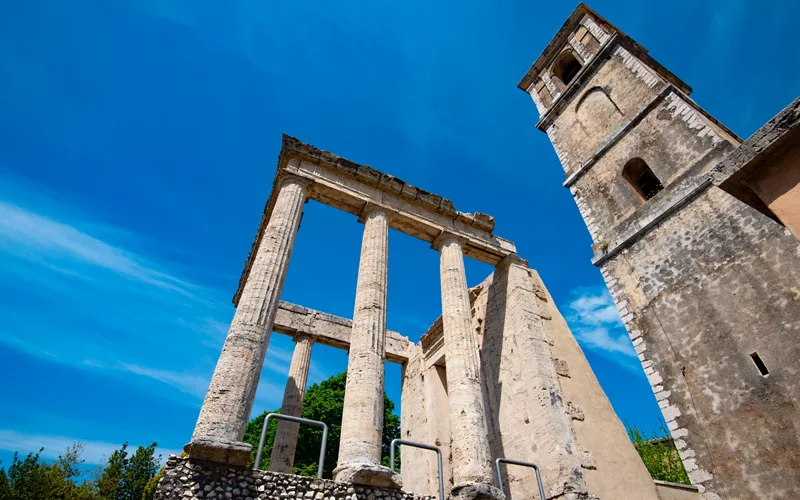
Arriving in Cori, the progression of the houses, in a pyramid arrangement, leads us to the top of the hill, where we find the Temple of Hercules, on the summit of what was once an ancient acropolis, from which you can enjoy a breathtaking view. From the Temple, the marked division of Cori between mountain and valley is visible, and not only physically but also civically given the heated district rivalry. The Temple of Hercules, in pure Doric style and dating from the 1st century B.C., preserves its tetrastyle façade intact. On the architrave of the door are carved the names of the magistrates who commissioned the work: Marco Maglio and Lucio Turpilio. Back in the valley, opposite the Town Hall is the Complex of Sant'Oliva, which houses, inside the old Augustinian convent, the Museum of the City and Territory. The Church of Sant'Oliva, built on the remains of a pagan temple, is finely frescoed with biblical scenes from the late 15th century. The Museo della Città e del Territorio (Museum of the City and the Territory), inaugurated in 2000, houses a valuable collection of archaeological artefacts and exhibits testifying to the evolution of Cori over the centuries. And the path that winds its way between the cloister and the ancient Augustinian convent also deserves special attention from an architectural point of view. While outside the St Oliva complex, at the foot of the statue of Victory, emerges one of the most striking stretches of Cyclopean walls that once protected the settlement.
Three ideas on what to do
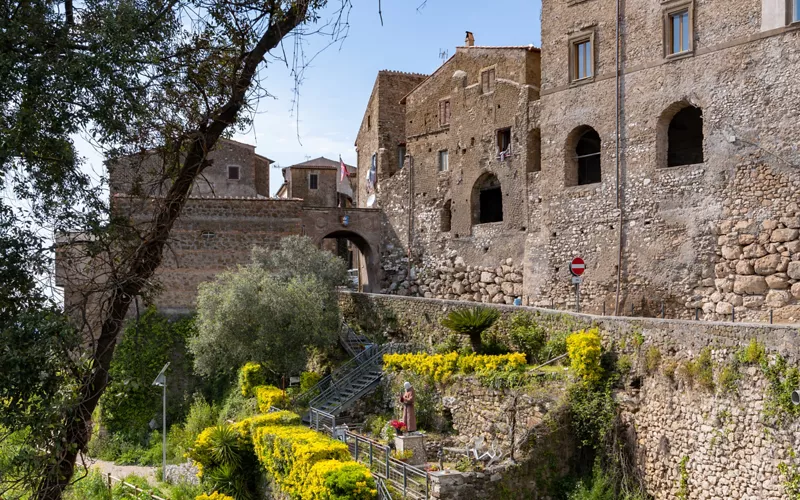
- Visit the wine cellars. Wine represents a very ancient tradition of Cori. Its fertile hills give rise to native grape varieties that are highly esteemed in the national wine scene, such as Nero Buono or Bellone di Cori. The city's wine-making supremacy is contended between the Marco Carpineti, Cincinnato and Pietrapinta cellars, which also offer sophisticated and refined food and wine experiences along the Wine, Oil and Flavours Trail through the area.
- Strolling through the alleyways of Cori. From Piazza Signina, you can take a walk to the Temple of Hercules through the characteristic alleyways of the historical centre. Along the route, often adorned with the flags of the districts, you may come across an ancient fountain where, according to tradition, Frederick Barbarossa bathed. When you arrive at the Temple of Hercules, a beautiful view appears over the Pontine Plain, where you can relax at sunset. Descending towards Cori valley on foot, you can reach the remains of the temple of Castor and Pollux and Piazza del Pozzo Dorico, from where you take Via Ninfina to the Ponte della Catena.
- Attending the historical carousel. One of the best-prepared and most impressive re-enactments is certainly the Historical Carousel of the Districts of Cori, which since 1937 has commemorated the festivities of Our Lady of Succour, who appeared here in 1521, and of Saint Olive, the city's patron saint. Around 400 participants in period costumes dating back to the first half of the 16th century take part in this festival. Dames, knights, pages and Priors parade through the city before the exciting ring race in which the three gates compete for the Palio amidst the feats of the famous flag wavers of Cori.
What to eat in Cori: 5 specialities
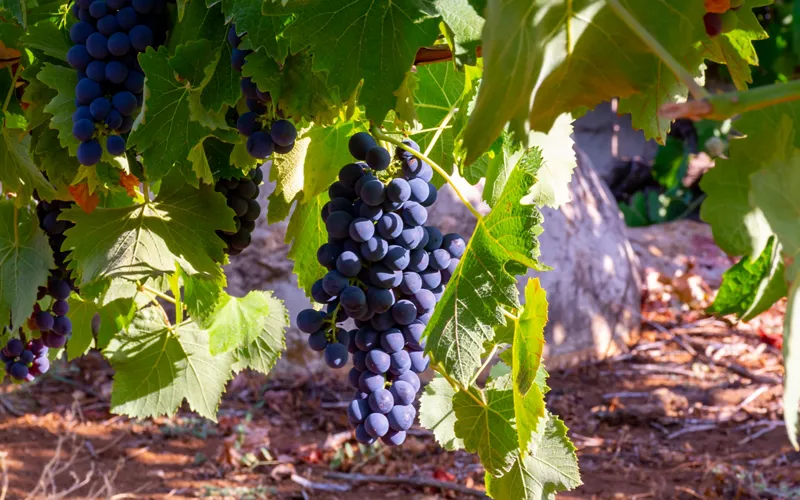
The Prosciutto Cotto al Vino. A truly unique cooked ham, the preparation of which has been handed down for generations. The ham is recognisable by its aromatic flavour obtained from the use of certain herbs for cooking together with the fine wine produced in Cori.
The oil and the olives. Thanks to the centuries-old olive trees, a delicate extra virgin olive oil is produced, as well as the prized Itrane olives also known as Gaeta olives. Cori's oil is a source of pride for the country. It has been awarded both in Italy and abroad and is part of the PDO Colline Pontine.
The 'bastoncini mandorlati', the characteristic dry biscuits made with Cori wine, are a synthesis of the local gastronomic culture: still handmade, they are an excellent end to a meal to be enjoyed in company.
Cori bread is one of the most exported products in the entire province of Latina. It accompanies cold meats, cheeses and is at its best in panzanella. Exceptional in 'pà sotto con gli fasói', a local soup in which slices of bread are covered with beans.
The Wine of Cori. The PGI Lazio denomination and several awards and recognitions make Cori one of the most renowned towns in the Monti Lepini of the Province of Latina for quality wine. The mild climate that envelops the surrounding hills favours viticulture, and the main grape varieties used in wine production are Bellone and Nero Buono di Cori, which are used to produce 'DOC Cori Rosso' and 'Cori Bianco'.
Unusual places
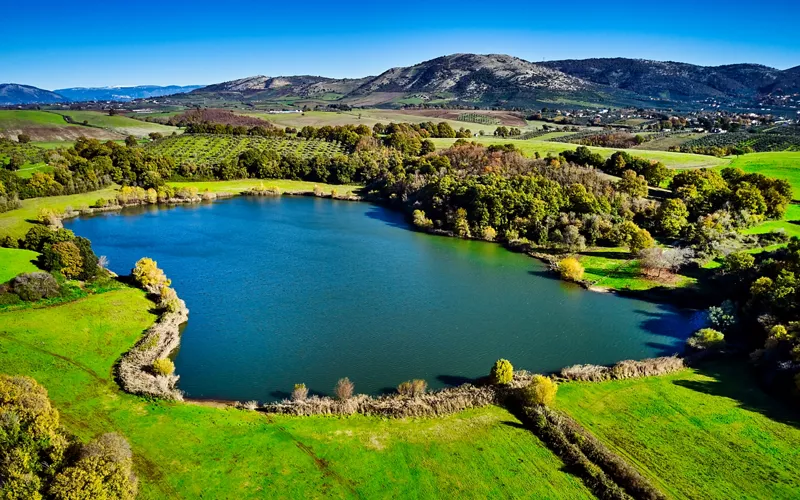
In addition to the points of interest already described, Cori guards a veritable treasure trove of medieval art known as the 'Scrovegni Chapel of Basso Lazio', inside theOratory of the SS. Annunziata. Considered one of the great attractions of Lazio, the small Oratory located at the roadside represents one of the most important late Gothic pictorial decorations in Lazio. The Chapel of the Annunziata can be visited on request by contacting the local Proloco and is managed by the Regional Directorate of Lazio Museums.
The village of Giulianello, a small centre 8 km from Cori, has a long history dating back to the Giulia family. The remains of the ancient gateway to the village, the baronial palace 'Salviati Castle' and the 16th-century church dedicated to St John the Baptist are still preserved in the Borgo. Near the village is Lake Giulianello. Declared a natural monument in 2007, it is an ideal place for walking in contact with nature.
Content based on information provided by our Partner,We Cooperate Together

